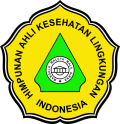HUBUNGAN FAKTOR IKLIM DENGAN KASUS DBD DI KOTA BANDAR LAMPUNG TAHUN 2015 – 2019
Abstract
Keywords
Full Text:
PDFReferences
Ayumi, F., Iravati, S., & Umniyati, S. R. (2016). Hubungan iklim dan kondisi lingkungan fisik rumah terhadap insidensi demam berdarah dengue di beberapa zona musim di Daerah Istimewa Yogyakarta (Studi kasus di Kecamatan Kasihan, Kabupaten Bantul, Yogyakarta). Berita Kedokteran Masyarakat, 32(12), 455. https://doi.org/10.22146/bkm.8790
Azhar, K., Marina, R., & Anwar, A. (2017). A prediction model of Dengue incidence using climate variability in Denpasar city. Health Science Journal of Indonesia, 8(2), 68–73. https://doi.org/10.22435/hsji.v8i2.6952.68-73
Bhatt, S., Gething, P. W., Brady, O. J., Messina, J. P., Farlow, A. W., Moyes, C. L., … Hay, S. I. (2013). The global distribution and burden of dengue. Nature, 496(7446), 504–507. https://doi.org/10.1038/nature12060
Brady, O. J., Gething, P. W., Bhatt, S., Messina, J. P., Brownstein, J. S., Hoen, A. G., … Hay, S. I. (2012). Refining the Global Spatial Limits of Dengue Virus Transmission by Evidence-Based Consensus. PLoS Neglected Tropical Diseases, 6(8), e1760. https://doi.org/10.1371/journal.pntd.0001760
Brady, O. J., Golding, N., Pigott, D. M., Kraemer, M. U. G., Messina, J. P., Reiner, R. C., … Hay, S. I. (2014). Global temperature constraints on Aedes aegypti and Ae. albopictus persistence and competence for dengue virus transmission. Parasites and Vectors, 7(1), 1–17. https://doi.org/10.1186/1756-3305-7-338
Brady, O. J., Johansson, M. A., Guerra, C. A., Bhatt, S., Golding, N., Pigott, D. M., … Hay, S. I. (2013). Modelling adult Aedes aegypti and Aedes albopictus survival at different temperatures in laboratory and field settings. Parasites and Vectors, 6(1), 1–12. https://doi.org/10.1186/1756-3305-6-351
Brisbois, B. W., & Ali, S. H. (2010). Climate change, vector-borne disease and interdisciplinary research: social science perspectives on an environment and health controversy. EcoHealth, 7(4), 425–438.
Dinas Kesehatan Kota Bandar Lampung. (2019). Profil Kesehatan Kota Bandar Lampung Tahun 2018. Bandar Lampung.
Dinas Kesehatan Provinsi Lampung. (2018). Profil Kesehatan Provinsi Lampung Tahun 2017. Bandar Lampung: Dinas Kesehatan Provinsi Lampung.
Focks, D. A., Daniels, E., Haile, D. G., & Keesling, J. E. (1995). A Simulation Model of the Epidemiology of Urban Dengue Fever: Literature Analysis, Model Development, Preliminary Validation, and Samples of Simulation Results. The American Journal of Tropical Medicine and Hygiene, 53(5), 489–506. https://doi.org/10.4269/ajtmh.1995.53.489
Gubler, D. J. (2013). Prevention and control of Aedes aegypti-borne diseases: Lesson learned from past successes and failures. Asia-Pacific Journal of Molecular Biology and Biotechnology, 19(3), 111–114.
Karyanti, M. R., Uiterwaal, C. S. P. M. P. M., Kusriastuti, R., Hadinegoro, S. R., Rovers, M. M., Heesterbeek, H., … Bruijning-Verhagen, P. (2014). The changing incidence of Dengue Haemorrhagic Fever in Indonesia: a 45-year registry-based analysis. BMC Infectious Diseases, 14(1), 412. https://doi.org/10.1186/1471-2334-14-412
Kemenkes. (2010, August). Demam Berdarah Dengue di Indonesia Tahun 1968-2009. Buletin Jendela Epidemiologi, 1–14. Retrieved from https://www.kemkes.go.id/download.php?file=download/pusdatin/buletin/buletin-dbd.pdf
Kesetyaningsih, T. W., Andarini, S., Sudarto, & Pramoedyo, H. (2018a). Determination of environmental factors affecting dengue incidence in Sleman District, Yogyakarta, Indonesia. African Journal of Infectious Diseases, 12(Special Issue 1), 13–25. https://doi.org/10.2101/Ajid.12v1S.3
Kesetyaningsih, T. W., Andarini, S., Sudarto, S., & Pramoedyo, H. (2018b). The minimum-maximum weather temperature difference effect on dengue incidence in sleman regency of Yogyakarta, Indonesia. Walailak Journal of Science and Technology, 15(5), 387–396.
Kraemer, M. U. G., Sinka, M. E., Duda, K. A., Mylne, A. Q. N., Shearer, F. M., Barker, C. M., … Hay, S. I. (2015). The global distribution of the arbovirus vectors Aedes aegypti and Ae. Albopictus. ELife, 4(JUNE2015), 1–18. https://doi.org/10.7554/eLife.08347
Li, C., Lu, Y., Liu, J., & Wu, X. (2018). Climate change and dengue fever transmission in China: Evidences and challenges. Science of the Total Environment, 622–623(19), 493–501. https://doi.org/10.1016/j.scitotenv.2017.11.326
Lloyd, L. S. (2003). Best practices for dengue prevention and control in the Americas. Washington DC Camp Dresser and McKee International Environmental Health ….
Mondrow, E. (2016). Climate change and health. Annals of Internal Medicine, 165(10), 745–746. https://doi.org/10.7326/L16-0413
Morin, C. W., Comrie, A. C., & Ernst, K. (2013). Climate and Dengue Transmission: Evidence and Implications. Environmental Health Perspectives, 121(11–12), 1264–1272. https://doi.org/10.1289/ehp.1306556
Mourya, D. T., Yadav, P., & Mishra, A. C. (2004). Effect of temperature stress on immature stages and susceptibility of Aedes aegypti mosquitoes to chikungunya virus. American Journal of Tropical Medicine and Hygiene, 70(4), 346–350.
Negev, M., Paz, S., Clermont, A., Pri-Or, N. G., Shalom, U., Yeger, T., & Green, M. S. (2015). Impacts of climate change on vector borne diseases in the mediterranean basin — implications for preparedness and adaptation policy. International Journal of Environmental Research and Public Health, 12(6), 6745–6770. https://doi.org/10.3390/ijerph120606745
Paramita, R. M., & Mukono, J. (2018). Hubungan Kelembapan Udara dan Curah Hujan Dengan Kejadian Demam Berdarah Dengue di Puskesmas Gunung Anya 2010-2016. The Indonesian Journal of Public Health, 12(2), 202. https://doi.org/10.20473/ijph.v12i2.2017.202-212
Regis, L., Monteiro, A. M., De Melo-Santos, M. A. V., Silveira, J. C., Furtado, A. F., Acioli, R. V., … De Souza, W. V. (2008). Developing new approaches for detecting and preventing Aedes aegypti population outbreaks: Basis for surveillance, alert and control system. Memorias Do Instituto Oswaldo Cruz, 103(1), 50–59. https://doi.org/10.1590/S0074-02762008000100008
Rusli, Y., & Yushananta, P. (2020). Climate variability and dengue hemorrhagic fever in Bandar Lampung, Lampung Province, Indonesia. International Journal of Innovation, Creativity and Change, 13(2), 323–336.
Rustia, H. N., Wispriyono, B., Susana, D., & Luthfiah, F. N. (2010). Lama Pajanan Organofosfat Terhadap Penurunan Aktivitas Enzim Kolinesterase Dalam Darah Petani Sayuran. Makara Kesehatan, 14(2), 95–101.
Sigit, S. H., Koesharto, F. X., Hadi, U. K., Gunandini, D. J., Soviana, S., Wirawan, I. A., … Utomo, S. (2006). Hama Pemukiman Indonesia: Pengenalan, Biologi, dan Pengendalian (1st ed.; S. H. Sigit & U. K. Hadi, eds.). Bogor: Fakultas Kedokteran Hewan, Institut Pertanian Bogar.
Tang, S. C. N., Rusli, M., & Lestari, P. (2018). Climate Variability and Dengue Hemorrhagic Fever in Surabaya, East Java, Indonesia. Arlangga Unversity, (December). https://doi.org/10.20944/preprints201812.0206.v1
Tosepu, R., Tantrakarnapa, K., Nakhapakorn, K., & Worakhunpiset, S. (2018). Climate variability and dengue hemorrhagic fever in Southeast Sulawesi Province, Indonesia. Environmental Science and Pollution Research, 25(15), 14944–14952. https://doi.org/10.1007/s11356-018-1528-y
Tosepu, R., Tantrakarnapa, K., Worakhunpiset, S., & Nakhapakorn, K. (2018). Climatic factors influencing dengue hemorrhagic fever in Kolaka district, Indonesia. Environment and Natural Resources Journal, 16(2), 1–10. https://doi.org/10.14456/ennrj.2018.10
World Health Organization. (1997). Dengue Haemorrhagic Fever Diagnosis, Treatment, prevention and Control (second Edi).
World Health Organization. (2003). Comprehensive guidelines for prevention and control of dengue and dengue haemorrhagic fever. In WHO Regional Publication SEARO. https://doi.org/10.1017/CBO9781107415324.004
World Health Organization. (2011). Comprehensive guideline for prevention and control of dengue and dengue haemorrhagic fever.
World Health Organization. (2014). World Health Statistic 2014.
World Health Organization. (2021). Dengue and severe dengue. Retrieved August 3, 2021, from WHO website: https://www.who.int/news-room/fact-sheets/detail/dengue-and-severe-dengue
Yushananta, P. (2021). Dengue Hemorrhagic Fever and Its Correlation with The Weather Factor In Bandar Lampung City City : Study From 2009-2018. Jurnal Aisyah : Jurnal Ilmu Kesehatan, 6(1), 117–126.
Yushananta, P., & Ahyanti, M. (2014). Pengaruh Faktor Iklim Dan Kepadatan Jentik Ae.Aegypti Terhadap Kejadian DDB. Jurnal Kesehatan Lingkungan, V(1), 1–10. https://doi.org/http://dx.doi.org/10.26630/jk.v5i1.58
Yushananta, P., Setiawan, A., & Tugiyono, T. (2020). Variasi Iklim dan Dinamika Kasus DBD di Indonesia: Systematic Review. Jurnal Kesehatan, 11(2), 294. https://doi.org/10.26630/jk.v11i2.1696
DOI: https://doi.org/10.26630/rj.v15i2.2790
Refbacks
- There are currently no refbacks.
Publish by: Department of Environmental Health, Tanjungkarang Health Polytechnic

Ruwa Jurai: Jurnal Kesehatan Lingkungan is licensed under a Lisensi Internasional Creative Commons Attribution-NonCommercial 4.0 .







.png)




